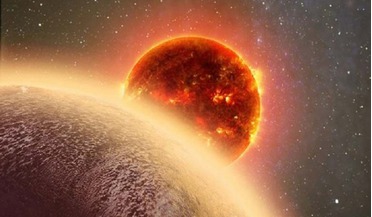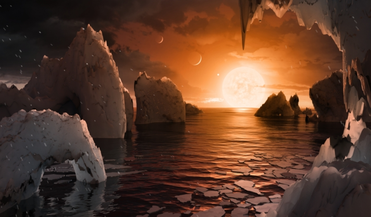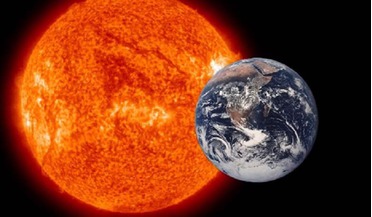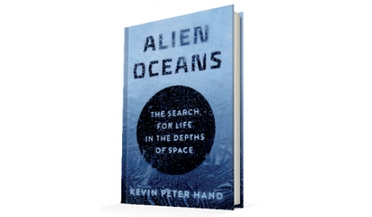 March 2016
Saving Earth from an Expanding Sun
March 2016
Saving Earth from an Expanding Sun
... phases of rich civilisations to do this - maybe half the time - as the Sun’s heat continuously moves our habitable or Goldilocks zone further outward. Is this concept too ambitious? For now, perhaps. But it’s not too soon to be thinking - even...
 02 March 2016
Using MUSCLES to test for life on other planets
02 March 2016
Using MUSCLES to test for life on other planets
...Earth-size planets in the habitable zones around nearby stars. The habitable zone (HZ) or ‘Goldilocks Zone’ is seen as the location... the radiation field changes dramatically for different habitable zone distances around low-mass stars, as indicated by...
 22 February 2017
NASA announces the discovery of first-ever exoplanet system with seven Earth-size planets
22 February 2017
NASA announces the discovery of first-ever exoplanet system with seven Earth-size planets
... the discovery of seven Earth-size planets located in the TRAPPIST-1 system, three of which are in the so-called Goldilocks zone – part of the system most likely to host planets with liquid water. The exoplanet system, named after...
 19 November 2018
Kepler officially retires after receiving final "goodnight" commands
19 November 2018
Kepler officially retires after receiving final "goodnight" commands
... to be surrounded by small, possibly rocky, planets similar in size to Earth, orbiting within the habitable zone of their parent stars. This ‘Goldilocks zone’ as it has become known, is within a region where liquid water - a vital ingredient to life...
 04 January 2016
Researchers find a new way to calculate the pull of gravity at the surface of a star
04 January 2016
Researchers find a new way to calculate the pull of gravity at the surface of a star
... such basic properties of a star can be hard to evaluate given the extreme distances involved. Determining if a planet sits in a ‘Goldilocks Zone’ of its host planet, meaning that the planet is neither too hot nor too cold for liquid...
 25 September 2020
Alien Oceans - The Search for Life in the Depths of Space
25 September 2020
Alien Oceans - The Search for Life in the Depths of Space
... ocean” to the icy satellites most likely to harbour life. On the way, he revisits the Gaia hypothesis, the Goldilocks zone and other familiar concepts, and laces them together with his personal experience as a deputy chief scientist...